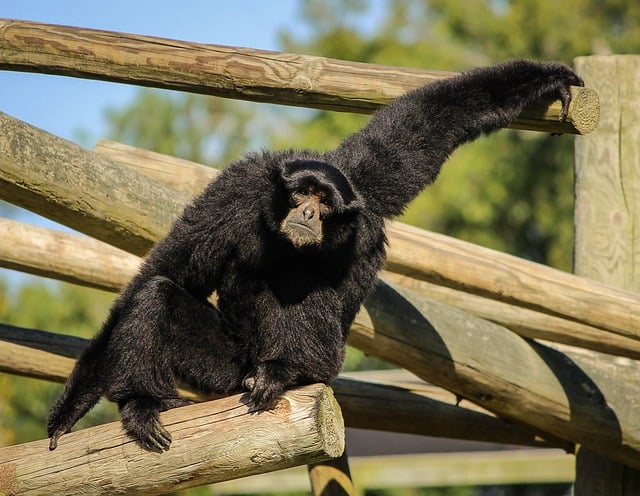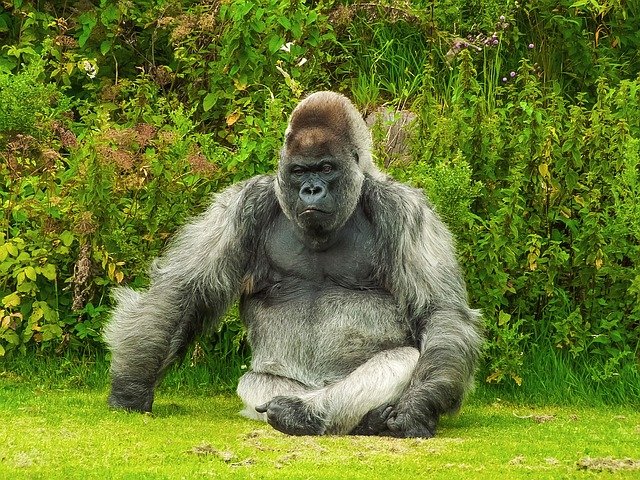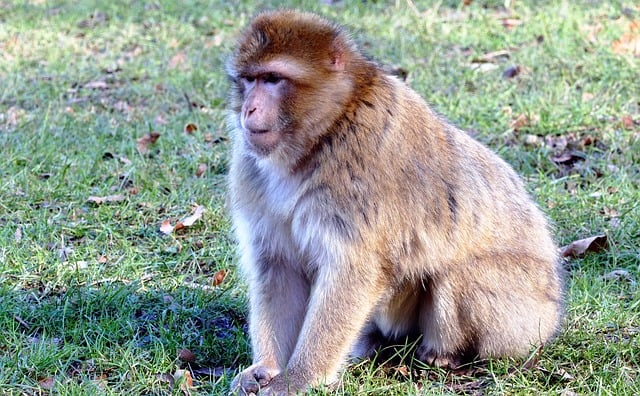Have you ever wondered why some animals don’t have tails, especially those which are supposed to have tails? If so, Let’s see, those with reasons why they lost their tail or simply, don’t have tails.
It’s a very special and interesting article on Animals without Tails, and Reasons for Lacking Tail.
Let’s explore them with pictures.
Table of Contents
Land Animals without tails
Human

Humans are an intelligent species belonging to Genus Homo and Family Hominidae that are widespread species across the world.
As a bipedal species, they do not have tails. However, They have bones at the end of their backbone, during the embryonic development around 31 to 35 days of gestation that are later fused to each other vertebrae becoming the end structure of our backbone called the coccyx.
Surprisingly, These end bones of backbones sometimes fail to fuse together leading to an external tail in an individual.
Capybara

The capybara, also known as capivara, capiguara, fercho, is the largest species of rodent and also semiaquatic mammals belonging to the Genus Hydrochoerus and Family Caviidae. These are found in South America and other places.
Yes, They are as big as dogs in size. Ironically, they don’t have tails if so it is very tiny and a vestigial type. They almost look like a larger version of guinea pigs.
American black bear

The American black bear is a medium-sized bear that belongs to the Genus Ursus and Family Ursidae and is found in North America.
Black bears have relatively short, inconspicuous tails that sometimes are not seen in them. However, We can see the vestigial tail in bear cubs from birth.
Some studies suggest that they lack tails as they are not fast agile running animals that require them to make swift turns.
Small Animals without tails:
Frogs

A frog is an amphibian and a small-sized carnivorous animal that belongs to order Anura and is found almost everywhere except the Antarctic region.
Anura is the order in which frogs are placed where anura literally means ‘without tail’ in Ancient Greek. Thus Anura is a group that includes Frogs and other short-bodied animals that are characterized by no tail.
Interestingly, Frogs before developing into adults have what seem to be a tail in their tadpole stage. A tadpole is a young and developing frog that has a tail that is absorbed into the body as the legs start growing which is the cause for adults to become tailless.
Confusion: Some adults seem to have a tail and that’s not actually a tail but it is an appendage called the cloaca, an extension of a male reproductive part.
Toads

Toad is almost like frogs in appearance but is not exactly frogs that are set in the family Bufonidae, and found in most of the places like the frogs. Toads have drier, rougher skin but frogs have smooth skin, now I hope you know what toads are.
Like frogs are set in Order Anura, Toads are also set in the same group. Anura is the order in which both frogs and toads are placed where anura literally means ‘without tail’ in Ancient Greek.
Millipedes

A Millipede is a group of arthropods that belongs to Class Diplopoda and is found in almost every country. They have hundreds of legs. For example, Illacme plenipes has about 750 legs.
As they are slow-moving animals and have many legs they don’t need tails for balancing because tails are the feature present in fast-moving or flying animals.
Centipedes

The Centipede means a hundred-foot animal, is a group of arthropods that belong to the class Chilopoda and are found in many countries.
Interestingly, these lack tails but some of them are venomous that can inject venom into intruders, predators through pincer-like appendages called forcipules.
Kiwi

The Kiwi, also known as kiwis, is a small tailless bird among the ratites that belongs to Genus Apteryx and the Family Apterygidae and is found in New Zealand.
An iconic bird from New Zealand is the kiwi bird that does not have a tail because of no tail feathers and is an almost wingless bird but if wings present then they are too small.
These belong to a group of birds called ratites that are flightless birds such as ostriches, emus, rheas, and cassowaries.
Domestic Animals without tails:
Guinea pigs

The guinea pig, also known as a domestic guinea pig, cavy or domestic cavy, is a special type of rodent that belongs to the genus Cavia and family Caviidae and is found in South America, savannas, and other places.
A tailbone in guinea pigs is fused under their pelvis that is not visible or expressed outside of their body as it happens in rats or other rodents.
Guinea pigs don’t have and also need a tail because they don’t balance through their tails as they are less known to climb, jump, and live on flat surfaces and are also known to use burrows left by other animals.
Araucana chickens

The Araucana, also known as South American Rumpless in the United States, is a special type of domestic chicken that is found in Chile and other countries.
They don’t have tails or tail feathers like other birds, while they possess special types of feathers on the ears and are found to be rumpless as they lack a tail and tailbone.
Wild Animals without tails:
Gibbons

The Gibbon is an ape or lesser ape in the family Hylobatidae, Order Primates, and Class Mammalia and is found in Bangladesh, Northeast India, southern China, Indonesia Borneo, and Java.
Like all the other apes such as gorillas, orangutans, chimpanzees, and bonobos, these gibbons don’t have tails. Interestingly, like most apes, these are also found to walk bipedally while balancing through their hands.
Their primary mode of locomotion is through swinging confidently from branch to branch at a speed of about 55 km/h (34 mph).
Siamangs

The siamang, including Sumatran siamang and the Malaysian siamang, is an arboreal species of gibbon in the Family Hylobatidae and Order Primates and is found in Indonesia, Malaysia, and Thailand.
Simply, They don’t have a tail, that’s it. We can observe a large gray or pink throat sac which is an impressive feature of these apes as it can be inflated to create loud calls.
Even though these siamang belong to the ape they don’t build nests like the apes. However, they can sleep at the fork of a tree by sitting in an upright position.
Orangutan

An Orangutan is a species that belongs to the great apes in the Genus Pongo and Family Hominidae found in Indonesia, Malaysia, Borneo, and Sumatra.
Surprisingly, Orangutans, like other apes such as gorillas, Bonobo, Humans, and others, do not possess tails. However, they have long arms, and a unique feature in them is their distinctive cheek pads called flanges that are used to attract female mates.
Young, or Juveniles without flanges seem to be females because only An adult male develops the flanges.
Gorillas

Gorilla, including eastern gorillas and western gorillas, is a herbivorous ape that belongs to the Genus Gorilla and Family Hominidae and is found in central Sub-Saharan Africa, Uganda, western Africa, Guinea, and Angola.
Gorillas don’t have tails as they belong to a group of apes that are known to lack tails. Interestingly, Some studies suggest that as they are big and ground-dwelling creatures that over time start to use their tails less and less that causes them to lose their tails over the many generations.
Unfortunately, there are about one lakh gorillas known to live today.
Chimpanzees

A chimpanzee, also known as the common chimpanzee, and fondly as a chimp, is an iconic animal that belongs to Genus Pan and Family Hominidae. and is found in the savannah of Africa.
As a chimpanzee is classified as an ape it doesn’t have tails because we know apes lack tails. Those apes include our chimpanzees, bonobos, gorillas, and orangutans.
Weird and unbelievable about them is they are found to hunt bushbuck or monkeys for eating.-that’s unbelievable. Right.
Bonobo

A bonobo, also known by other names in the past such as pygmy chimpanzee, dwarf chimpanzee, or gracile chimpanzee, is a great ape that belongs to the Genus Pan and Family Hominidae that are found in the Democratic Republic of Congo and other places as well.
When it comes to answering, Whether bonobos have tails or not? It is harder to answer because they have a tail structure that is not long and is made up of a white tail tuft. This tuft is located in the same place of tails as in other monkeys. Remember, these are not monkeys but are actually apes.
Most people confuse bonobos as the same as chimpanzees. That’s not so because bonobos are different and classified in separate groups.
Surprisingly, bonobos are the apes with bipedal behavior next to humans, which means they can walk with you as you can do.
Koalas

A koala, also known as a koala bear, is a tree-climbing marsupial that belongs to the Genus Phascolarctos and Family Phascolarctidae and is found in Eastern Australia, southeastern and eastern Australia.
Have you ever seen very cute animals? If not, then see a baby Koala-that definitely adds a smile to your face. Now, Koala doesn’t have external tails even though its marsupial members such as kangaroos, wallaby, and tree-kangaroo have such long strong tails that act as a fifth limb. However, they possess a vestigial tail bone structure in their skeletal system but not expressed outside their bodies.
Interestingly, Koala bears have two opposable thumbs that are useful for climbing as they are arboreal animals.
Barbary macaque

A Barbary macaque, also known as a Barbary ape, is an Old World Monkey species in Genus Macaca and Family Cercopithecidae and is found in Algeria, Morocco, and other places.
Surprisingly, Barbary macaque doesn’t have tails, If so it is less visible and is a vestigial tail while other monkeys have a long tail. Its vestigial tail is so short and less than an inch. Interestingly, Its vestigial tail is more seen and expressed in males than females.
Adult male of the Barbary macaque has a more prominent tail than females but not as long as other monkeys.
What surprises us about these monkeys is their cheeks as they are capable of holding food as much as their own stomachs, which is an advantageous feature when they are competing for food.
Other animals without tail
Octopus

Octopus is a mollusc that belongs to the Order Octopoda and Class Cephalopoda that includes squids, cuttlefish, and nautiloids. These are found almost in every ocean of the world.
They don’t have tails and have eight long arms or limbs but no tentacles and a specialized arm called hectocotylus meant for delivering sperm.
Starfish

A Starfish, also known as a sea star, is a marine invertebrate that belongs to the Class Asteroidea and is found in all of the world’s oceans.
They don’t have tails like fish to propel through the water. However, They can propel through the marine water and floor by using their five arms that act as a tail and fins of fish, especially their special tube feet that help them to move also used as feet and can do many more functions.
Starfish can regenerate their own arms if they are damaged or lost due to predator attacks.
Jellyfish

A Jellyfish is a sea animal that belongs to Phylum Cnidaria and most of them are found in the marine areas of many countries.
Most will confuse their long tentacles as tails but they are not actually so. Simply, Jellies don’t have tails like the whale, fish, or even like a cheetah. Its tentacle is stinging in nature that can be used to capture the prey and also can defend itself from predators.
Read Also : Animals With Long Legs !
Why do animals have tails but humans don’t?
Animals, especially kangaroos, monkeys, have tails for many functions depending on the type of animals they are, how fast and slow they are, and importantly whether they live on trees or on ground, and so on.
Monkeys need a tail for balancing on trees while moving, jumping, grasping branches. Whereas kangaroos need tails as they act as fifth limbs that support during kick fighting with other kangaroos.
As a bipedal species and as an ape, We humans don’t need tails as we are capable of walking and balancing through our two long legs. Interestingly, some of the human babies born with tails are actually due to the failure of bone fusion at the end of our backbones.
Sources:
https://www.reference.com/science/animals-don-t-tails-3e584477ce602c00
